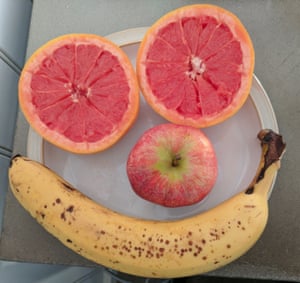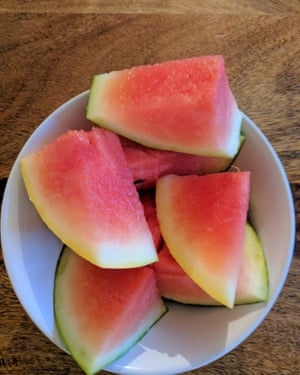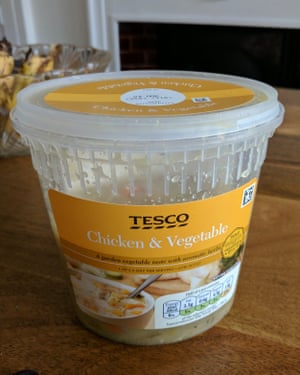There’s this doctor, Dr. Joel Wallach, who wrote a book entitled, “Dead Doctors Don’t Lie”.
In his book, Dr. Wallach frowns upon the corruption of today’s MDs, saying they are all basically hookers for the pharmaceutical industry.
He references diseases like ulcers, cancer, arthritis, Alzheimer’s, kidney stones, varicose veins, stroke, cardio myopathy, cravings, liver or age spots, hyperactive children, low blood sugar, diabetes, baldness, hearing problems, osteoporosis, smell and taste loss, gingivitis, hypertension, high blood pressure, insomnia, muscle cramps, PMS, and low back pain.
Dr. Wallach says that virtually all doctors recommend synthetic chemicals to treat the symptoms of all those illnesses and never once address the cure.
So, throughout his endless verbiage he recommends vitamins and minerals to treat all illnesses. I guess for a doctor that’s a major breakthrough.
His recommendations to, in some way, treat all the above afflictions are the use of carotene, vitamin E, beta-carotene, magnesium, boron, calcium, selenium, chromium, vanadium, zinc, amino acids, and essential fatty acids.
Unfortunately, he never mentioned where all he talked about could be found in food or the mineral sulfur, which would heal just about everything he listed. To take all the other ‘healers” he mentioned, would require spending as much money on them as someone would on the synthetic pharmaceuticals.
So, I got to thinking. I’ve been studying the link between diet and disease since 1975 and was forced, in 2007, to get a Masters degree in nutrition to shut up the MDs that would call in on my radio show asking what my credentials were (I guess telling them I graduated Magna Cum Laude from the School of Hard Knocks fell a bit short).
Anyway, in my mind, I felt that there had to be a more economical way to get all he advised. So, I began researching. What I discovered absolutely agreed with what my mind thought before the process began.
Everything he talked about could be found in food. But the type was a mind-blower.
Vitamin E:
Benefits:
Structural and functional maintenance of skeletal, cardiac, and smooth muscle. Assists in formation of red blood cells. Maintains stores of vitamins A and K. has a positive effect on the immune system and protects against oxidative damage that can lead to heart disease. Has preventative effects against cancer, helps relieve symptoms of Alzheimer’s, and may prevent diabetic-related eye damage.
Sources:
Chard, avocados, peanuts, bell peppers, asparagus, beets, mustard greens, chili peppers, kale, tomatoes, olives, cranberries, raspberries, kiwi, carrots, leeks.
Beta Carotene:
Benefits:
Considered an antioxidant. Helps maintain healthy skin. Plays a vital role in eye health. Lowers risk of heart attacks, stroke, macular degeneration, and other age related diseases.
Sources:
Baked sweet potatoes, carrots, dark leafy greens, romaine lettuce, squash, cantaloupe, bell peppers, peas, apricots, broccoli.
Magnesium:
Benefits:
Relieves headaches, muscle spasms, muscle cramps, anxiety, depression, autism, ADD, Restless Leg Syndrome, insomnia, psoriasis, acne, eczema, asthma, blood pressure, ostoporosis.
Sources:
Dark leafy greens, nuts and seeds, beans and lentils, whole grains, avocados, bananas, dried fruit, and dark chocolate.
Boron:
Benefits:
Monitors blood sugar; aids metabolism; reduces food cravings; regulates fat and cholesterol; prevents hypertension.
Sources;
Almonds, walnuts, avocado, broccoli, potatoes, pears, prunes, honey, oranges, onions, garbanzo beans, carrots, beans and lentils, bananas, red grapes, red apples, raisins.
Selenium:
Benefits:
Controls blood sugar levels.
Sources:
Brazil nuts, whole grain bread, crimini mushrooms, whole grains.
Chromium:
Benefits:
Helps metabolize carbohydrates; monitors blood sugar levels and stabilizes blood sugar; prevents hypertension of high blood pressure; helps in preventing memory loss and in treating Alzheimer’s.
Sources:
Corn (nonGMO), sweet potatoes.
Vanadium:
Benefits:
Helps control blood-sugar levels in diabetics.
Sources:
Green beans, tomatoes, corn (nonGMO), parsley.
Zinc:
Benefits:
Proper functioning of the immune and digestive systems; control of diabetes; stress reduction; energy metabolism; healing for acne and wounds; helpful in pregnancy, hair care, eczema, night blindness, colds, eye care, appetite loss.
Sources:
Toasted wheat germ, spinach, pumpkin and pumpkin seeds, squash and squash seeds, nuts, dark chocolate, beans and lentils, mushrooms.
Amino acids:
Benefits:
Muscle development and immune strength; building and strengthening the central nervous system.
Sources:
Quinoa, soy (nonGMO).
Essential fatty acids:
Benefits:
Formation of healthy cell membranes; proper development and functioning of the brain and nervous system; proper adrenal and thyroid activity; regulation of blood pressure, liver function, immune and inflammatory responses; regulation of blood clotting – omega 6’s encourage clotting and omega 3’s reduce clotting; supports healthy skin and hair; crucial for the transport and breakdown of cholesterol.
Sources:
Hemp, flax, walnuts, dark green leafy vegetables, broccoli, spinach, almonds, whole grain foods, olive oil. Yes, the EFAs are contained in mercury, toxic waste, radiated, and PCB laden fish and a chicken’s period, but who in their right mind want to eat neurologically damaging foods?
Calcium:
Benefits:
Maintaining bone health, dental health, prevention of colon cancer and reduction of obesity.
Sources:
All nuts and seeds, coconut meat and butter, beans and lentils, whole grains, artichokes, asparagus, green beans, beets and beet greens, bok choy, broccoli, cabbage, carrots, cauliflower, celery, collards, corn (nonGMO), dandelion greens, eggplant, kale, leeks, okra, onions, parsnips, peas, lettuce, all potatoes, squash, chard, turnips, zucchini, apples, avocado, banana, berries, cherries, figs, grapes, guava, melons, kiwi, lemon, mango, nectarines, oranges, papaya (nonGMO), peaches, pears, persimmons, pineapple, plums, dries fruits, nonGMO soy milk, rice milk, almond milk, hemp milk, hazelnut milk, tempeh, blackstrap molasses, sesame tahini.
Calcium depleters:
Flesh protein, caffeine, excess phosphorus (sodas, flesh products), sodium (flesh products, canned or snack foods, tobacco, refined sugar, alcohol, aluminum-containing antacids, drugs such as antibiotics, steroids, thyroid hormones, vitamin A supplements, a sedentary lifestyle. Regarding dairy products, they contain too much calcium. Only 30 percent is absorbed and the remaining 70 percent never makes it past the intestinal wall and simply comes out with the doodoo.
Copper:
Benefits;
A key mineral and central to building strong tissue, maintaining blood volume, and producing energy in your cells. In the foods commonly eaten, there are small amounts of copper and the amount of copper you eat is directly related to the amounts of minimally processed plant foods you get every day. Copper deficiency has a direct link to ALS, also known as Lou Gehrig’s disease. Copper also enhances antioxidant protection, bone and tissue integrity, energy support, and cholesterol balance.
Refined grains have half the copper content as whole grains. Cooking at high temperatures will impair our ability to absorb the copper from those foods. The best solution is raw or lightly steamed.
Oh yeah, the following are symptomatic of low copper: Anemia, high cholesterol, fatigue, low immune function, osteoporosis, slow wound healing, cardiac arrhythmia, arthritis.
Sources:
Nuts and seeds, shiitake and crimini mushrooms, beet greens, soybeans (nonGMO), spinach, asparagus, chard, kale, mustard greens, squash, tempeh, beans and lentils, sweet potato, olives, green peas, grapes, pineapple, flaxseeds, Brussels sprouts, beets, berries, tomato, broccoli, basil, cabbage, sea vegetables, black pepper, miso, eggplant, fennel, leeks, parsley, chili peppers, romaine lettuce, quinoa, whole grains, avocado, buckwheat, oats, pears, onion, raisins, collard greens, papaya (nonGMO), banana, cantaloupe, melons, oranges, carrots, cucumber, cumin, bok choy, figs, peppermint, thyme, tumeric.
If you made it this far I am sure you noticed one predominate factor that Dr. Wallach did not: The essential foods to keep you well are mostly, as much as possible, organic, fruits, vegetables, nuts and seeds and whole grains. In other words, a vegan diet.
So, why if everything can be kept under control by avoiding flesh, dairy, eggs and synthetic chemicals, does the tongue override the intelligence?
As far as supplementing the basics of putting unleaded fuel in the gas tank, organic sulfur crystals, fresh bee pollen, and super foods like Orgain organic protein creamy dark chocolate powder, Rejuvenate: Berries and Herbs and Raw Power (chocolate) Protein Powder from the Natural News store, are the fuel additives that keep my engine running smoothly and do the trick. I kid you not!
Aloha!
Sources:
www.deaddocs.com
www.healthaliciousness.com
www.livestrong.com
The George Mateljan Foundation
www.completenutrition.com
www.downtoearth.org
www.asanediet.com
To learn more about Hesh, listen to and read hundreds of health related radio shows and articles, and learn about how to stay healthy and reverse degenerative diseases through the use of organic sulfur crystals and the most incredible bee pollen ever, please visit www.healthtalkhawaii.com, or email me at heshgoldstein@gmail.com or call me at (808) 258-1177. Since going on the radio in 1981 these are the only products I began to sell because they work.
Oh yeah, going to www.asanediet.com will allow you to read various parts of my book – “A Sane Diet For An Insane World”, containing a wonderful comment by Mike Adams.
In Hawaii, the TV stations interview local authors about the books they write and the newspapers all do book reviews. Not one would touch “A Sane Diet For An Insane World”. Why? Because it goes against their advertising dollars.
What you essentially need and the easiest place to find it




